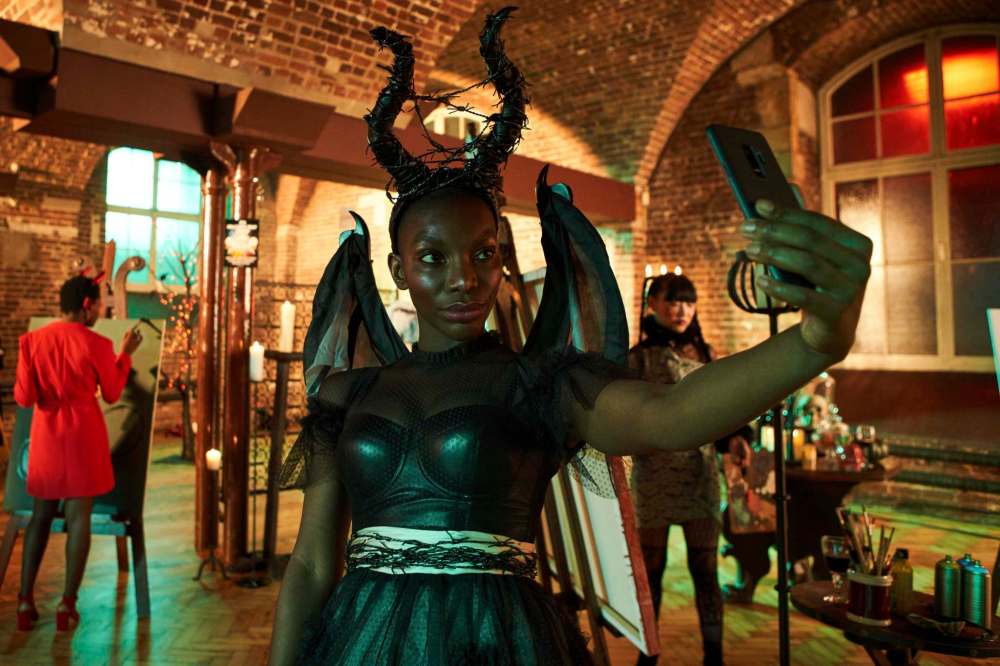Frivolous brutality TV shows wallow in 'empty calories' of protracted violence
Read this article for free:
or
Already have an account? Log in here »
To continue reading, please subscribe:
Monthly Digital Subscription
$0 for the first 4 weeks*
- Enjoy unlimited reading on winnipegfreepress.com
- Read the E-Edition, our digital replica newspaper
- Access News Break, our award-winning app
- Play interactive puzzles
*No charge for 4 weeks then price increases to the regular rate of $19.00 plus GST every four weeks. Offer available to new and qualified returning subscribers only. Cancel any time.
Monthly Digital Subscription
$4.75/week*
- Enjoy unlimited reading on winnipegfreepress.com
- Read the E-Edition, our digital replica newspaper
- Access News Break, our award-winning app
- Play interactive puzzles
*Billed as $19 plus GST every four weeks. Cancel any time.
To continue reading, please subscribe:
Add Free Press access to your Brandon Sun subscription for only an additional
$1 for the first 4 weeks*
*Your next subscription payment will increase by $1.00 and you will be charged $16.99 plus GST for four weeks. After four weeks, your payment will increase to $23.99 plus GST every four weeks.
Read unlimited articles for free today:
or
Already have an account? Log in here »
Hey there, time traveller!
This article was published 04/08/2021 (1597 days ago), so information in it may no longer be current.
Hello and welcome to my latest TV column in which I will argue that TV violence is like pizza. And if you are already assuming this theory is along the lines of any-pizza-is-good-pizza, you are reading the wrong TV column, so farewell and have a good one.
But let’s hit pause on what we will agree to call the “Pizza Principle of TV Violence,” in favour of a little prologue in two parts or, say, two slices? And yes, sigh, there will be spoilers, but I’ll try to be judicious.
“Hush now missus,” Dane DeHaan says in his seething, terrifying performance as Jim Dooley/Jim Dandy in Apple TV+’s Lisey’s Story, a Stephen King novel adapted by the author himself.

Dooley/Dandy says these words about two-thirds of the way into a, let’s see, oh yes, 19-second scene in which he wields a pizza cutter to repeatedly slash the title character, played by Julianne Moore, whom he’d already tied up and beaten. The visuals are enthusiastically matched by wet, grunty sound effects. Very effective.
I know this scene is 19 seconds long because on my second attempt, I counted. On the first attempt, I rewound to make sure I hadn’t misunderstood, and then I closed the app and walked away in a huff.
A few weeks before, I’d similarly bailed on a very long scene in the final season of The Handmaid’s Tale in which newly recaptured handmaid June (Elisabeth Moss) was restrained and threatened with torture. How long was this scene? No idea but my finger got fatigued from hitting the 10-second fast-forward with no sign of a conclusion.
So let’s get back to my Pizza Principle of TV Violence.
Theory: Pizza that is poorly made and not served piping hot is a crime. Likewise, TV violence is far too important for producers, writers, directors, actors, et al to frivolously dish out in empty calories of shock or visual jokes. Both should be carefully crafted, delivered on time and not served so often as to lose their dramatic value.
Now, you might be thinking it is crass to link disturbing scenes of violence to a popular fast food. To that I say you should really try making your own pizza. More importantly, you are correct. It is as ridiculous as the way in which violence was used in these two shows.
In The Handmaid’s Tale (Crave), I can’t speak to the end of the torture scene or the rest of the season, but previous seasons have steadily, effectively and occasionally grotesquely depicted violence against the reproductive slaves in lips-sewn-shut, genital-mutilation horror, that was felt in the gut and the heart. That earlier violence was essential in fleshing out the dystopian warning in Margaret Atwood’s original novel. But a prolonged scene of threatened torture so late in a series that was already dragging from too many seasons and too many extended closeups of Moss’s dead-eyed portrayal? Ineffectual overkill.
In Lisey’s Story, it was critical that Lisey suffer visible wounds because the surprise way in which she heals herself is germane to the plot of a widow fighting to preserve and understand the legacy of her assassinated novelist husband. But compared to the facial injuries from the earlier beating, the pizza cutter slashes are a barely visible part of that transformative healing. So what purpose did the lugubrious slashfest serve? It eludes and infuriates me.
TV violence is, indeed, important because sometimes it is the best or only way to tell a story.

Take my recent catch-up binge of The Americans (2013-18, Shaw on demand), the Cold War thriller about Russian spies in the U.S. in the 1980s. In the first episode, we are shown a flashback in which Keri Russell’s spy, Elizabeth, is raped by her training officer. The trauma of that is key to understanding the heart of her cold-blooded, deeply hurt character.
Another example is the one-season wonder that is 2020’s I May Destroy You. The acclaimed British show on Crave is about a young novelist’s realization that the small cut on her head, amnesia and missing phone are more than morning-after-the-night-before hiccups. All 12 episodes feature harrowing replays as Arabella (writer and star Michaela Coel) pieces together the night of her assault. As they help her, each of her friends undergoes their own reframing of the nature of consent, assault, recovery and revenge. The final episode is 35 minutes and 21 seconds of holding your breath. And yet it is also one of the funniest, most tender shows I have seen in years. This is must-see violence in context and is upsetting because it shows what is still too rarely talked about.
Of course not all TV violence is essential. I relish the Nov. 7 return of the serial killer’s serial killer in Dexter: New Blood. I can’t wait to be reunited with Michael C. Hall’s bloodlusty avenging angel, reprised from the 2006-13 original series. At least he kills bad people, but does it make the world a better place?
Is TV violence like pizza? I’m just here to raise questions, upset your stomach with tasteless metaphors and leave you with the subliminal urge to both order take-out and enrol in a media studies course.
— Special to the Winnipeg Free Press
Denise Duguay writes about TV twice a week at d2tv.wordpress.com. Questions, comments to d2tvblog@gmail.com.
Our newsroom depends on a growing audience of readers to power our journalism. If you are not a paid reader, please consider becoming a subscriber.
Our newsroom depends on its audience of readers to power our journalism. Thank you for your support.







